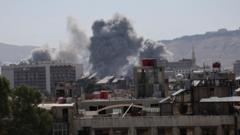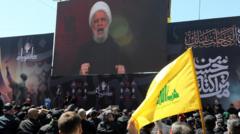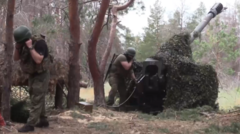In a symbolic and poignant act, Prince Harry walked through a partially cleared minefield in Angola, echoing his mother, Princess Diana's, trailblazing journey in 1997. The visit highlights a disturbing trend of countries reconsidering their commitment to anti-land mine conventions, as global calls for demining efforts face new challenges.
Prince Harry Honors Diana With Return to Angola Minefield Amid Renewed Land Mine Threats

Prince Harry Honors Diana With Return to Angola Minefield Amid Renewed Land Mine Threats
Prince Harry retraces Princess Diana's iconic 1997 minefield journey in Angola, as concerns grow over nations withdrawing from land mine treaties.
Prince Harry, the Duke of Sussex, embarked on a mission that evokes the vital work his mother began nearly three decades ago. In 1997, Princess Diana’s poignant walk through a minefield in Angola brought critical international attention to the devastating legacy of land mines. She donned protective gear and stood amidst cautionary signs while the nation faced civil unrest.
On July 16, 2025, Harry traversed a minefield near Cuito Cuanavale—located approximately 350 miles from where Diana had made her stand. His visit comes at a time of alarming re-evaluation of international land mine treaties by several nations. Notably, Poland, Estonia, Latvia, and Lithuania announced their intent to withdraw from the anti-land mine convention, arguing that escalating regional security threats necessitated reassessing military strategies since Russia’s aggression in Ukraine began in 2022. This withdrawal is set to take effect in September, with Finland following closely behind.
Harry cooperated with The Halo Trust, an organization dedicated to land mine clearance, and assisted in neutralizing two anti-tank mines from Angola's long-standing conflict, which lasted until 2002. His actions recall a commitment to mitigate the dangers of land mines, which have claimed nearly 60,000 lives or injuries in Angola alone since 2008, with many being innocent civilians.
The timing of Harry's visit serves as an urgent reminder of the dark history of land mines. Since the UN's 1997 treaty prompted 164 countries to outlaw new antipersonnel mine production, the fear that these deadly devices could re-emerge on a larger scale is palpable, particularly amidst the ongoing turmoil surrounding military conflicts like that in Ukraine, where such weapons have resurfaced.
As Prince Harry highlights the fragile progress achieved in land mine clearance and the importance of sustaining international cooperation against these lethal weapons, the specter of their resurgence looms large over global security narratives.
On July 16, 2025, Harry traversed a minefield near Cuito Cuanavale—located approximately 350 miles from where Diana had made her stand. His visit comes at a time of alarming re-evaluation of international land mine treaties by several nations. Notably, Poland, Estonia, Latvia, and Lithuania announced their intent to withdraw from the anti-land mine convention, arguing that escalating regional security threats necessitated reassessing military strategies since Russia’s aggression in Ukraine began in 2022. This withdrawal is set to take effect in September, with Finland following closely behind.
Harry cooperated with The Halo Trust, an organization dedicated to land mine clearance, and assisted in neutralizing two anti-tank mines from Angola's long-standing conflict, which lasted until 2002. His actions recall a commitment to mitigate the dangers of land mines, which have claimed nearly 60,000 lives or injuries in Angola alone since 2008, with many being innocent civilians.
The timing of Harry's visit serves as an urgent reminder of the dark history of land mines. Since the UN's 1997 treaty prompted 164 countries to outlaw new antipersonnel mine production, the fear that these deadly devices could re-emerge on a larger scale is palpable, particularly amidst the ongoing turmoil surrounding military conflicts like that in Ukraine, where such weapons have resurfaced.
As Prince Harry highlights the fragile progress achieved in land mine clearance and the importance of sustaining international cooperation against these lethal weapons, the specter of their resurgence looms large over global security narratives.





















